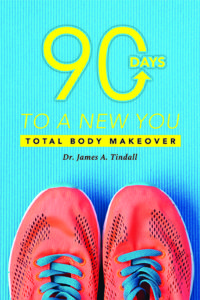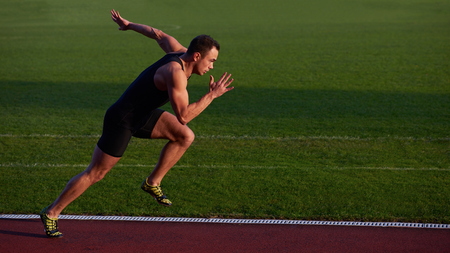How much do you really know about the difference between losing weight from cardio versus strength training? I constantly hear that running burns the most calories, more than any other exercise. This simply is not true. Running is popular and easy to do for the non professional, but cardio training has its misconceptions. Following are some common misconceptions regarding cardio training. Let’s begin with the simplest to the most complicated.
First, are you a scale watcher, better yet, a calorie burned display watcher? I hope not. Almost every piece of gym equipment used for cardio has a time and calories burned display that potentially tells you how many calories you burned during your workout. Unfortunately, these do not always work as planned. They are generally set up for the average height, weight, and or stride. While they will give you a ball park calories burned, they can be far off. Studies from various universities, and more recently the University of California, San Francisco suggest that whether you’re using a stationary bike, climber, or treadmill that the displayed burn rate generally ranges from 7 to 42% more calories burned than were burned. Treadmills were the worst at overestimating calories burned.
Second, you just need to stay in the zone – the fat burning zone – to burn more calories? This is one of the more common misconceptions about cardio workouts. The fact is that whether you’re just a jogger or work on strength training as well, you should involve a certain amount of cardio in the workouts you do. When trainers tell you to stay in the zone to burn fat, this refers to working out at lower intensities generally. Supposedly, the fat burning zone, while at a lower intensity and steady pace, will somehow allow you to burn a greater percentage of calories from stored fat versus stored carbohydrates. Unfortunately, this is one of the biggest misconceptions of all about cardio workouts. You will burn a larger proportions of your calories from fat at this lower intensity, but you will burn fewer calories overall, which includes calories from fat. Do not stay in the zone, but instead, go from the zone to high-intensity training, back and forth to stimulate calorie burn. This is commonly called HIIT or high-intensity interval training. With an equal interval of ‘the zone’ to HIIT for about 20-30 minutes, you’ll burn twice as many calories as just ‘staying in the zone!’ What’s the real calorie burn difference? Instead of burning 6-7 calories per minute, you’ll burn about 14-15 or even more calories per minute. Again, twice a many calories per minute as during a long-endurance training routine.
Advertisement: Amazon (click on photo for more info)

Third, all you cardio buffs constantly work for sometimes an hour or more on that cardio machine. Somehow, you’ve been brainwashed into believing that cardio is more important than strength training and that you’ll burn more calories on an elliptical than you will on the bench doing bench presses. Technically, you’d be correct. However, those calories burned come from the building block of lean muscle mass, which are carbohydrates, fats, and protein. Unfortunately, that long-endurance exercise will burn the muscle, which is not what you want to burn during exercise if your goal is to lose body fat. Why? Because maintaining lean muscle mass is more important than calories burned. More importantly, if your workout with resistance exercises, you will maintain fat burning capacity for up to 2-3 hours after your workout. But, if that workout is cardio, the calorie burn stops immediately after the workout. It’s sort of a double edge sword.
It is important to understand this myth. Unless you are sprinting, there is generally no cell or small muscle tear-down from performing a cardio exercise if you’re not a newbie. However, strength training always results in such to an extent thus, the body will work to repair and grow muscles for quite a while after the workout, even up to 2-3 days, which process constantly burns calories. Such workouts also affect the physiology and therefore, enzyme levels in the body, which take a little while to return to normal. Thus, you would desire to build muscle and not burn it since building and maintaining lean muscle mass is the primary way to increase your metabolic rate, over and above that of cardio. A Harvard School of Public Health study demonstrated that men who performed strength training has less mid-section, i.e., belly fat than men who performed the same amount of time doing cardio. So, watch out becoming what I call ‘skinny fat people.’ These are those who do only cardio and while slim, have much more fat on their body than they should and that fat content is obvious, especially around the waist area.
Finally, there is a great misconception that that spinning class and running can somehow double as a resistance workout – not true! Almost all cardio targets slow-twitch muscle fibers, while resistance training will target primarily fast-twitch muscle fibers. Slow twitch muscle fibers work better for endurance and you might say slow-twitch oversees your muscular endurance while fast-twitch training generates muscle fiber – the greater the weight, the more muscle fiber generated. Consequently, spinning or what we refer to as resistance heavy, lower-body cardio, will not eliminate the need for lower-body strength workouts. Both strength and endurance are necessary for optimal health. However, if you simply cannot get to that strength workout and persist in doing only cardio, opt for sprinting in lieu of spinning. To do this well, try about 10 each of 20-40-20; 20-60-20; and 20-80-20, which is jog-run (full speed sprint)-jog. If it’s your first time, do only about 1/3 to ½ full speed to prevent tearing a hamstring or other leg muscle. So, go ahead and prepare for that 10K run, but perform some strength workouts in your training as well to help prevent muscle injury and imbalance in training.






